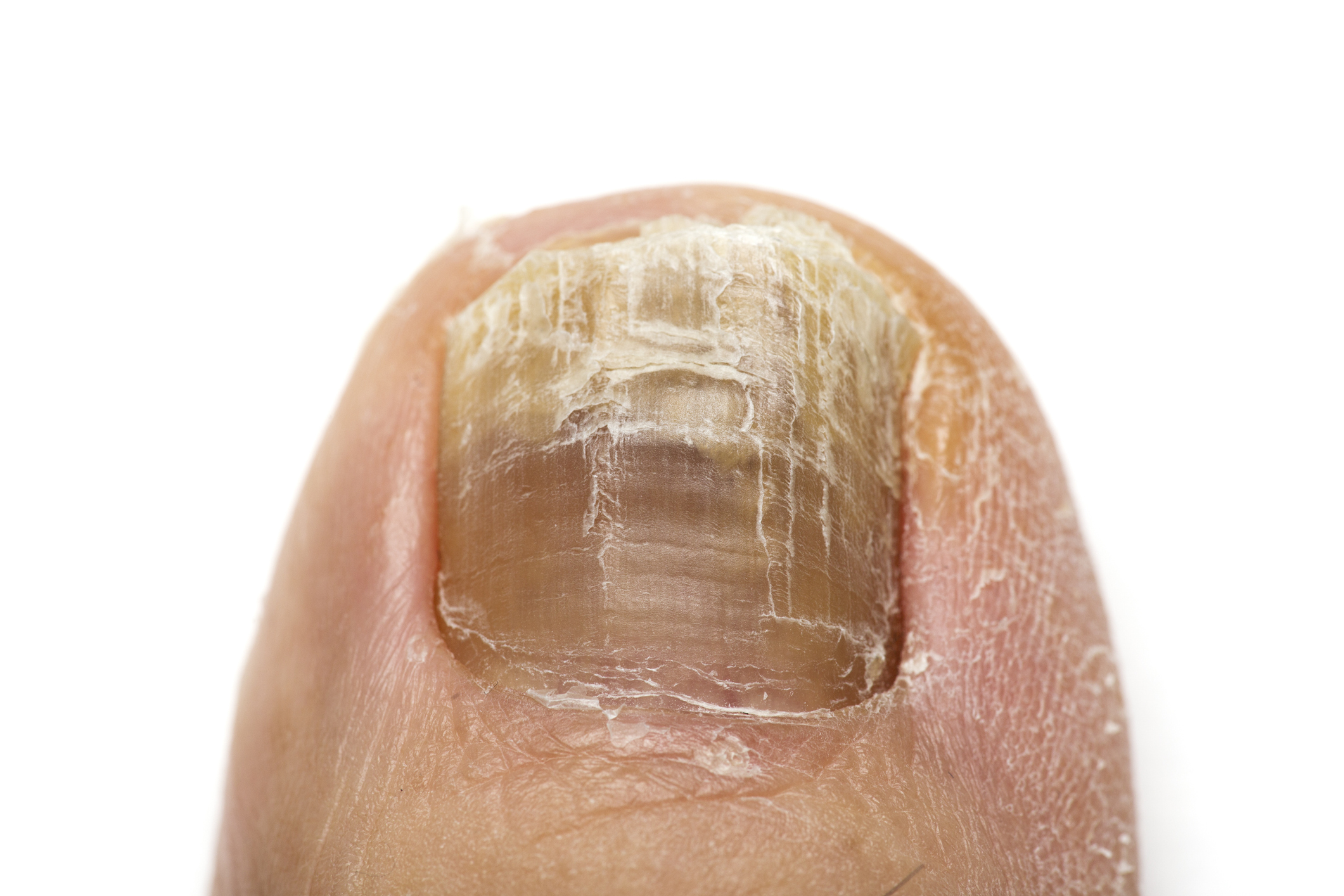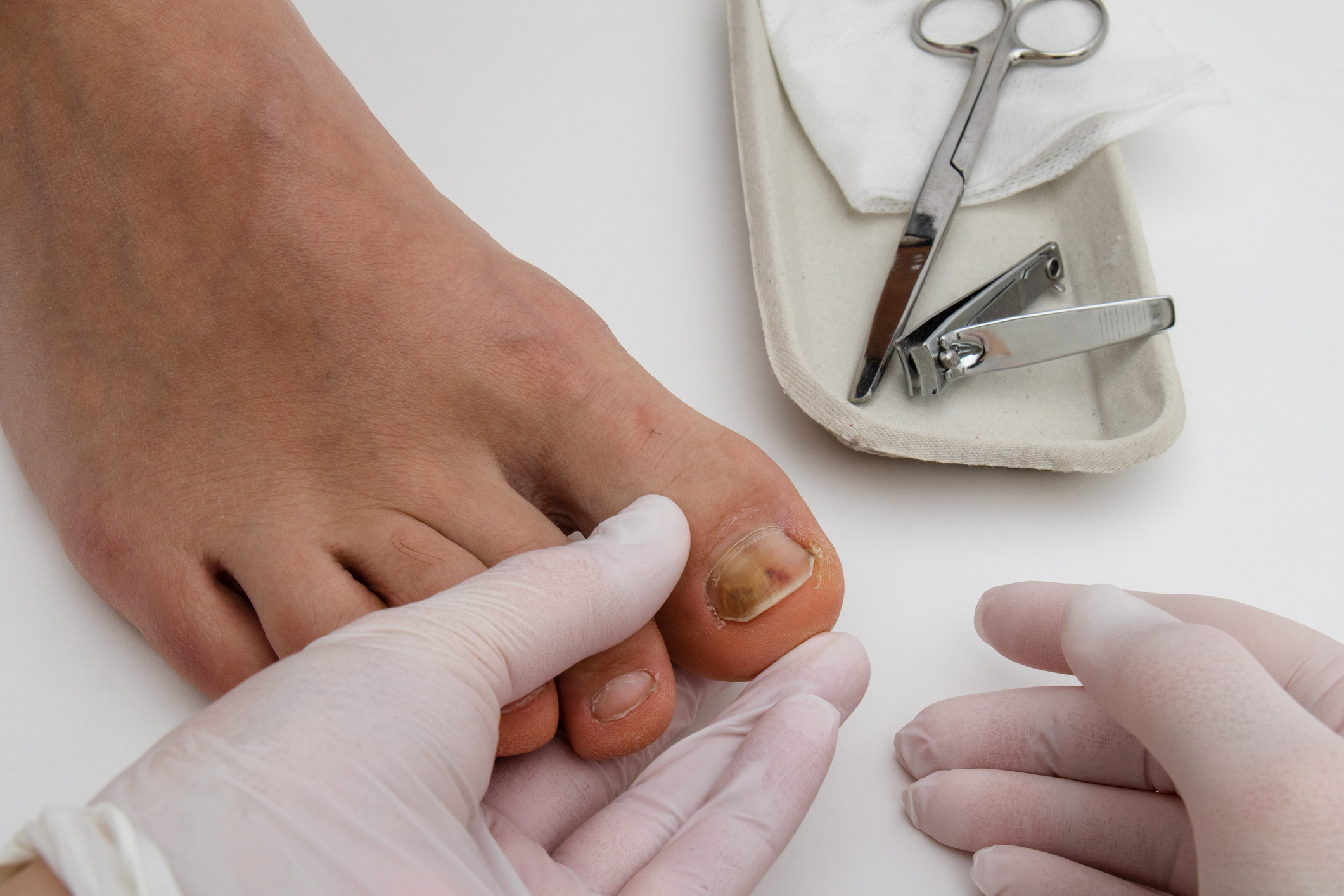Toenail fungus, also known as onychomycosis, is a common condition that affects millions of people worldwide. While initially a cosmetic issue, if left untreated, fungal toenails can become painful and lead to more serious complications. Understanding the causes, symptoms, and treatments available is important for maintaining healthy nails.
What Causes Toenail Fungus?
Toenail fungus is caused by the overgrowth of fungi in, under, or on the nail. The most common culprit is a type of fungus known as dermatophytes, though other fungi such as yeast and molds can also infect the nails. Fungal infections thrive in warm, moist environments like public pools, locker rooms, showers, and the insides of sweaty or wet shoes. It can also spread through contact with an infected person or by sharing personal items such as nail clippers, socks, or shoes.
Some factors that increase your risk of developing toenail fungus include:
- Age: with age, nails become more brittle and crack, allowing fungi to enter
- Sweating: creates a moist environment, ideal for fungal growth
- Poor circulation: people with diabetes or poor circulation are at greater risk due to reduced blood flow in their feet
- Nail injury
- Micro-trauma to the Nail: repetitive friction/rubbing of the toenails on the upper of closed-toed shoes can make the nails more susceptible to fungal invasion
- Weak immune system
Recognizing the Symptoms

![]()
Toenail fungus often starts with small, subtle changes to your nail, so it’s important to be on the lookout for early signs. Toenail fungus can also spread to other nails and, if severe, even cause discomfort when wearing shoes or walking. Common symptoms include:
- Thickened nails
- Discoloration: yellow, white or brown
- Brittle or crumbly nail texture
- Debris collects under the nails
- Foul odor
- Nail distortion: Over time, the shape of the nail can become distorted and even separate from the nail bed
How to Diagnose Toenail Fungus
The only way to truly diagnose toenail fungus is to obtain a sample of at least one of the affected toenails, and send it to a lab for testing. This lab test will determine whether there is truly a fungal toenail infection present, and often times can identify the specific strain of toenail fungus that is affecting the nails, allowing for more targeted treatment. This procedure is called a Nail Biopsy. There are various indications for performing this lab test. Determination of whether you should undergo a nail biopsy or not is based on each patients history, physical exam, and discussion with your podiatrist.
How to Treat Toenail Fungus

![]()
Toenail fungus can be challenging to treat, and it often requires time, diligence, and patience. Treatment options vary depending on the severity of the infection. Here are some of the most common approaches:
1.Over-the-Counter (OTC) Treatments Mild fungal infections can sometimes be managed with OTC antifungal creams, ointments, or medicated nail polishes. These products work best in the early stages of infection.
2.Prescription Medications For more stubborn infections, your doctor may prescribe stronger medications, such as:
- Topical antifungal treatments: Prescription-strength creams or solutions can be applied directly to the nail and surrounding skin.
- Oral antifungal pills: Medications like terbinafine or itraconazole may be prescribed to attack the infection from within. Oral medications are generally more effective but may take several months to clear the infection fully.
3. Laser Treatment Laser therapy is a newer, non-invasive, painless option that uses light to kill the fungus beneath the nail. This treatment is often used for moderate to severe cases.
Here at Performance Foot Ankle, we offer FDA-approved laser therapy for fungal toenails!
4. Nail Removal In severe or painful cases where the infection does not respond to other treatments, an in-office procedure to remove the nail may be considered. After the nail is removed, antifungal treatments can be applied to the exposed nail bed.
Preventing Toenail Fungus Preventing toenail fungus is much easier than treating it, and there are several steps you can take to reduce your risk:
- Keep your feet clean and dry, especially between the toes
- Wear moisture-wicking socks and shoes that allow air circulation
- Wear clean, fresh socks every day
- Keep your nails trimmed straight across and avoid injuring the surrounding skin
- Avoid walking barefoot in public areas: Always wear flip-flops or shoes in locker rooms, public showers, and around pools
- Use antifungal powders: If you are prone to sweaty feet, antifungal powders can help keep them dry and reduce your risk
When to See a Podiatrist
If you notice any signs of toenail fungus, it’s important to address it early. Minor infections may clear up with over-the-counter treatments, but if the infection worsens or spreads, seeing a podiatrist is essential. If you have diabetes, poor circulation, or a compromised immune system, you should contact your podiatrist at the first sign of a nail infection, as complications can arise more quickly.
At Performance Foot and Ankle, we can help you manage and treat toenail fungus. With the right knowledge and proper treatment, and preventative steps, you can keep your nails healthy and avoid complications. If you suspect you have toenail fungus, contact us today to set up a consultation with our podiatrist to find the best treatment options for you!
